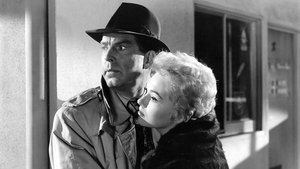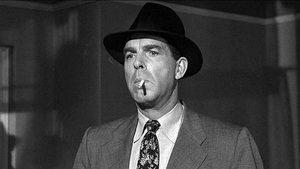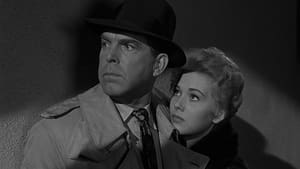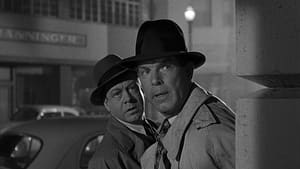Contact: info@alwanfilm.com
Video Sources 0 Views
- Watch trailer
- Pushover

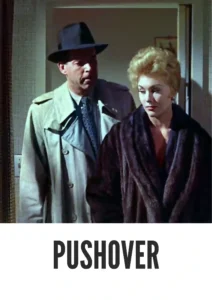
Synopsis
Table of Contents
ToggleCrime and Intrigue Unveiled: Exploring Pushover 1954 Colorized – A Review

Introduction
“Pushover” 1954 stands as a testament to the allure and mystique of classic film noir. Directed by Richard Quine and featuring a stellar cast led by Fred MacMurray and Kim Novak, this gripping thriller takes audiences on a journey through the murky world of crime, betrayal, and moral ambiguity. Now, with the release of its early colored version, “Pushover” 1954 offers viewers a fresh perspective on its timeless tale of greed and deception. In this comprehensive review, we will explore the significance of the film’s early colored version and its impact on the cinematic landscape.
Check The Full Colorized Movies List
Check Our Colorized Movies Trailer Channel
Understanding Pushover 1954 Colorized: Director, Cast, and Genre
“Pushover” 1954 emerges as a quintessential example of classic film noir, characterized by its moody atmosphere, morally ambiguous characters, and intricate plot twists. Directed by Richard Quine, the film showcases the director’s keen eye for visual storytelling and his ability to create tension and suspense. The cast, including Fred MacMurray, Philip Carey, and Kim Novak, delivers captivating performances that draw audiences deeper into the dark and dangerous world of the narrative. Set against the backdrop of a gritty urban landscape, “Pushover” 1954 explores themes of temptation, obsession, and the corrupting influence of power, establishing itself as a defining entry in the film noir genre.
Exploring the World of Pushover 1954 Colorized: Plot and Characters
“Pushover” 1954 follows police detective Paul Sheridan, played by Fred MacMurray, as he becomes entangled in a dangerous love affair with Lona McLane, portrayed by Kim Novak, the girlfriend of a notorious bank robber. As Sheridan’s infatuation with Lona deepens, he finds himself torn between his duty to uphold the law and his desire for personal gain. However, as the stakes escalate and the lines between right and wrong blur, Sheridan must confront the consequences of his actions and decide where his loyalties truly lie. Alongside Sheridan, a cast of morally complex characters, including Lona’s criminal boyfriend and a fellow detective, adds layers of intrigue and suspense to the narrative, keeping audiences on the edge of their seats until the film’s gripping conclusion.
The Art of Film Colorization
Film colorization represents a transformative advancement in the world of cinema, allowing filmmakers to imbue old movies with new life and vibrancy. By adding color to classic black and white films, colorization enhances the visual appeal of these timeless treasures while preserving their nostalgic charm and historical significance. With the advent of digital technology, colorization techniques have become increasingly sophisticated, offering filmmakers and audiences greater flexibility in how they experience and appreciate classic films.
Early Colored Films: A Brief History
The history of early colored films is a fascinating journey through the evolution of cinematic technology and artistic innovation. From the earliest experiments with hand-tinting techniques to the development of sophisticated colorization processes, filmmakers have continually sought to enhance the cinematic experience for audiences around the world. Early colored films not only provided audiences with a visually stunning spectacle but also paved the way for future advancements in color cinematography, shaping the course of film history for generations to come.
“Pushover” 1954 and Its Early Colored Version
The decision to release “Pushover” 1954 in a colorized format marks a significant milestone in the film’s legacy. By adding color to its atmospheric cinematography and evocative set designs, the early colored version of “Pushover” 1954 offers audiences a fresh perspective on its noir aesthetic while retaining the film’s inherent suspense and intrigue. While some purists may argue that colorization compromises the integrity of the original black and white version, others view it as an opportunity to breathe new life into a classic film and introduce it to a new generation of viewers.
The Debate Over Film Colorization
The debate over film colorization has long been a topic of contention among filmmakers, critics, and audiences alike. While some argue that colorization breathes new life into old movies and enhances the viewing experience, others contend that it compromises the artistic integrity of the original black and white versions. Proponents of colorization argue that it allows audiences to engage with classic films in a more immersive and relatable way, while detractors maintain that it alters the filmmaker’s original vision and detracts from the historical significance of the work. Ultimately, the decision to colorize a film remains a subjective one, with proponents and detractors on both sides of the argument.
Examining “Pushover” 1954 as an Early Colored Film
As audiences immerse themselves in the early colored version of “Pushover” 1954, they are presented with a unique opportunity to rediscover this classic noir thriller in a new light. While the addition of color may enhance certain aspects of the film’s visual narrative, it is essential to approach this version with a critical eye, mindful of its implications for the integrity of the original black and white version. By analyzing how colorization affects the mood, tone, and atmosphere of the film, viewers can gain a deeper appreciation for the artistic choices made by the filmmakers and the impact of color on the overall viewing experience.
Influence and Legacy: Pushover 1954 Colorized’s Impact on Cinema
“Pushover” 1954’s influence extends far beyond its initial release, shaping the trajectory of film noir and inspiring generations of filmmakers to explore the darker side of human nature. Richard Quine’s masterful direction and the film’s gripping storyline continue to captivate audiences, solidifying its status as a timeless classic in the pantheon of noir cinema. By examining “Pushover” 1954’s enduring legacy, we can gain insight into its lasting impact on the cinematic landscape and its contribution to the evolution of the film noir genre.
Director’s Cinematic Legacy: Beyond Pushover 1954 Colorized
Richard Quine’s directorial legacy extends beyond “Pushover” 1954, encompassing a diverse body of work that spans multiple genres and styles. From his early days as a contract player at Columbia Pictures to his later success as a director and screenwriter, Quine’s contributions to cinema have left an indelible mark on the industry. By exploring Quine’s cinematic legacy, we can gain a deeper understanding of his artistic vision and his influence on local and international filmmaking.
Themes Explored in Pushover 1954 Colorized
“Pushover” 1954 delves into a myriad of themes, including moral ambiguity, betrayal, and the consequences of greed. Through its flawed characters and morally complex storyline, the film offers a thought-provoking exploration of human nature and the darker impulses that lie beneath the surface of society. By examining the themes explored in “Pushover” 1954, we can gain insight into the universal truths and timeless questions that continue to resonate with audiences today.
Reception and Controversy Surrounding Pushover 1954 Colorized
Upon its release, “Pushover” 1954 received mixed reviews from critics and audiences alike, with some praising its atmospheric cinematography and taut suspense, while others criticized its formulaic plot and stereotypical characters. However, over time, the film has come to be regarded as a classic example of film noir, earning praise for its stylish visuals and gripping narrative. By exploring the reception and controversy surrounding “Pushover” 1954, we can gain insight into the evolving critical and cultural perceptions of the film and its enduring appeal to audiences around the world.
Where to Watch Pushover 1954 Colorized Online
For those eager to experience the timeless thrills of “Pushover” 1954, the film is readily available on popular streaming platforms, allowing viewers to enjoy its gripping narrative from the comfort of their own homes. With just a few clicks, audiences can embark on a cinematic journey through the shadowy world of film noir and immerse themselves in the atmospheric storytelling of this classic thriller.
FAQs About Pushover 1954 Colorized
- What sets “Pushover” 1954 apart from other film noir classics?
- “Pushover” 1954 distinguishes itself through its compelling storyline, atmospheric cinematography, and standout performances from its cast, making it a standout entry in the film noir genre. Its exploration of themes such as moral ambiguity, betrayal, and the consequences of greed adds depth and complexity to the narrative, resonating with audiences on a profound level.
- Is the early colored version of “Pushover” 1954 worth watching?
- While purists may prefer the authenticity of the original black and white version, the early colored version offers a fresh perspective on the film’s visual narrative, making it a worthwhile viewing experience for fans of classic cinema. The addition of color breathes new life into the film, enhancing its atmospheric elements and allowing audiences to appreciate its aesthetic beauty in a different light.
- What makes “Pushover” 1954 a timeless classic?
- “Pushover” 1954’s enduring appeal lies in its ability to resonate with audiences across generations. From its morally complex characters to its atmospheric cinematography, the film offers a captivating exploration of human nature and the darker aspects of society that remain relevant to contemporary audiences. Its themes of temptation, obsession, and the corrupting influence of power are universal and timeless, ensuring that the film retains its relevance and significance for years to come.
- How does “Pushover” 1954 compare to other Fred MacMurray films?
- “Pushover” 1954 stands out as a notable entry in Fred MacMurray’s filmography, showcasing the actor’s versatility and range as a performer. While MacMurray is perhaps best known for his roles in family-friendly comedies such as “The Absent-Minded Professor” and “The Shaggy Dog,” his turn as the morally conflicted detective Paul Sheridan in “Pushover” 1954 demonstrates his ability to excel in dramatic roles as well. His nuanced portrayal adds depth and dimension to the character, elevating the film to new heights.
- What are some key elements of Richard Quine’s directorial style in “Pushover” 1954?
- Richard Quine’s directorial style in “Pushover” 1954 is characterized by its atmospheric storytelling, meticulous attention to detail, and skillful use of suspense. From the film’s evocative cinematography to its carefully crafted mise-en-scène, Quine creates a sense of tension and unease that permeates every frame, keeping audiences on the edge of their seats from start to finish. His ability to elicit powerful performances from his cast and create a palpable sense of atmosphere sets “Pushover” 1954 apart as a masterful example of film noir craftsmanship.
Conclusion
As audiences embark on their cinematic journey through “Pushover” 1954, they are invited to rediscover the timeless allure of classic film noir in a new light. Whether experienced in its original black and white format or in the early colored version, “Pushover” 1954 remains a testament to the enduring power of cinema to captivate, thrill, and provoke thought long after the credits have rolled.
Through its gripping storyline, compelling characters, and atmospheric visuals, “Pushover” 1954 continues to leave an indelible mark on the cinematic landscape, ensuring its place in the annals of film history for years to come.
